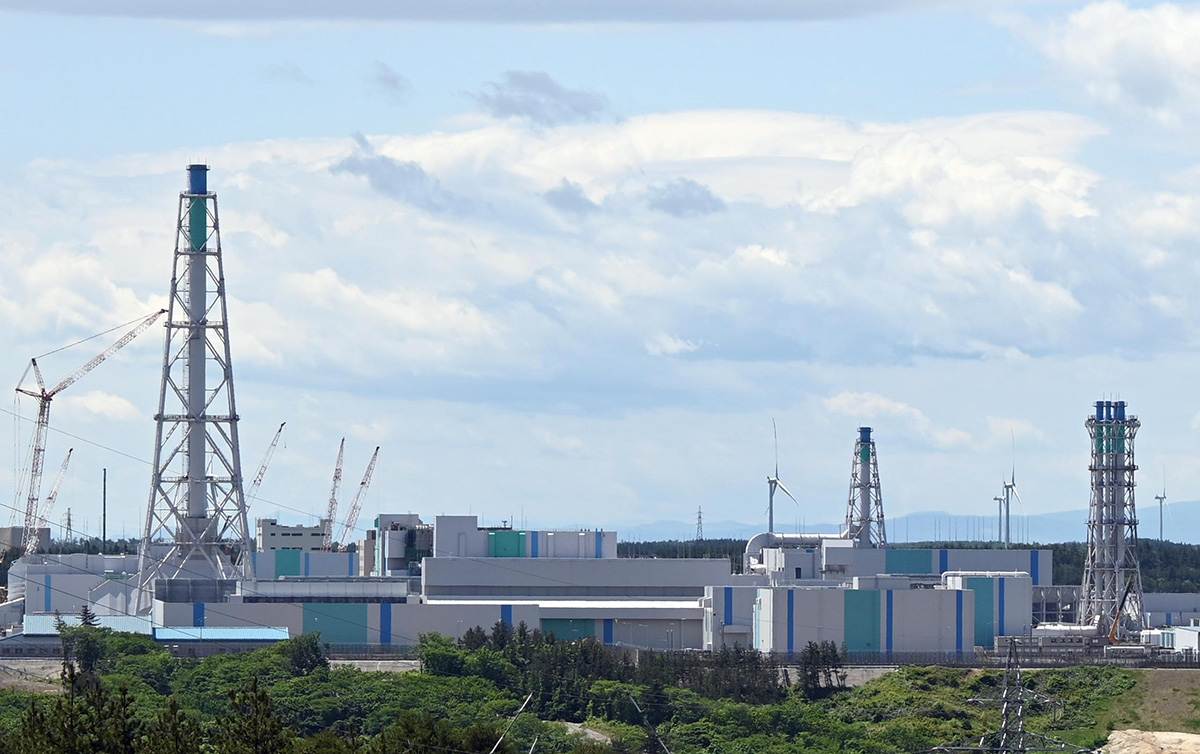
Japan Nuclear Fuel Ltd.’s nuclear fuel cycle facilities in Rokkasho, Aomori Prefecture.
12:03 JST, June 22, 2023
Following the enactment of the Green Transformation law, which allows nuclear power plants to operate for more than 60 years, it has become clear that the nation will have a stable supply of electricity going into the future, while also contributing to decarbonization by promoting the operation of nuclear power plants. This marks a shift in the nation’s nuclear energy policy, which has been stagnant since the 2011 accident at the Fukushima No. 1 nuclear power plant owned by Tokyo Electric Power Company Holdings, Inc. Now, the nuclear fuel cycle — one of the two pillars of the nuclear energy policy, along with the plants themselves — is taking on increased importance. I recently visited the nuclear fuel cycle facilities of Japan Nuclear Fuel Limited (JNFL) in Rokkasho, Aomori Prefecture, which are scheduled to be completed early in fiscal 2024.
On May 30, the day before the Green Transformation law was passed by the Diet, I headed north from Hachinohe City in Aomori Prefecture toward Rokkasho. Accompanied by JNFL senior officials, the drive was relatively free of red traffic lights and took a little over an hour.
Upon entering Rokkasho Village on the Pacific Ocean side of the Shimokita Peninsula. a group of gigantic buildings loomed into view: the nuclear fuel cycle facilities. “It’s just like a huge chemical plant,” a senior official said.
About 8,000 people work at the vast 7.5-million-square-meter site each day, including employees of JNFL and its partner companies. The official explained that the surrounding roads were usually congested in the mornings and evenings.
JNFL is engaged in five important projects that support the nuclear fuel cycle and the buildings at the Rokkasho site are arranged in a project-specific manner. The core facilities are a reprocessing plant to extract reusable plutonium and uranium from spent nuclear fuel, and a MOX (uranium-plutonium mixed oxide) fuel plant; neither facility is yet complete. The other three projects — temporary storage of high-level radioactive waste, final disposal of low-level radioactive waste and uranium enrichment — are already in full swing.
Nuclear power plants produce nuclear waste. In the nuclear fuel cycle, spent fuel is reprocessed to produce fuel that can be used again. By reusing reprocessed fuel, the amount of nuclear waste can be reduced. Although the plans for the two core facilities have been repeatedly postponed, it is hoped that the reprocessing plant can be operational by “as early as the first half of fiscal 2024” and the MOX fuel plant by “the first half of fiscal 2024.”
Reprocessing plant
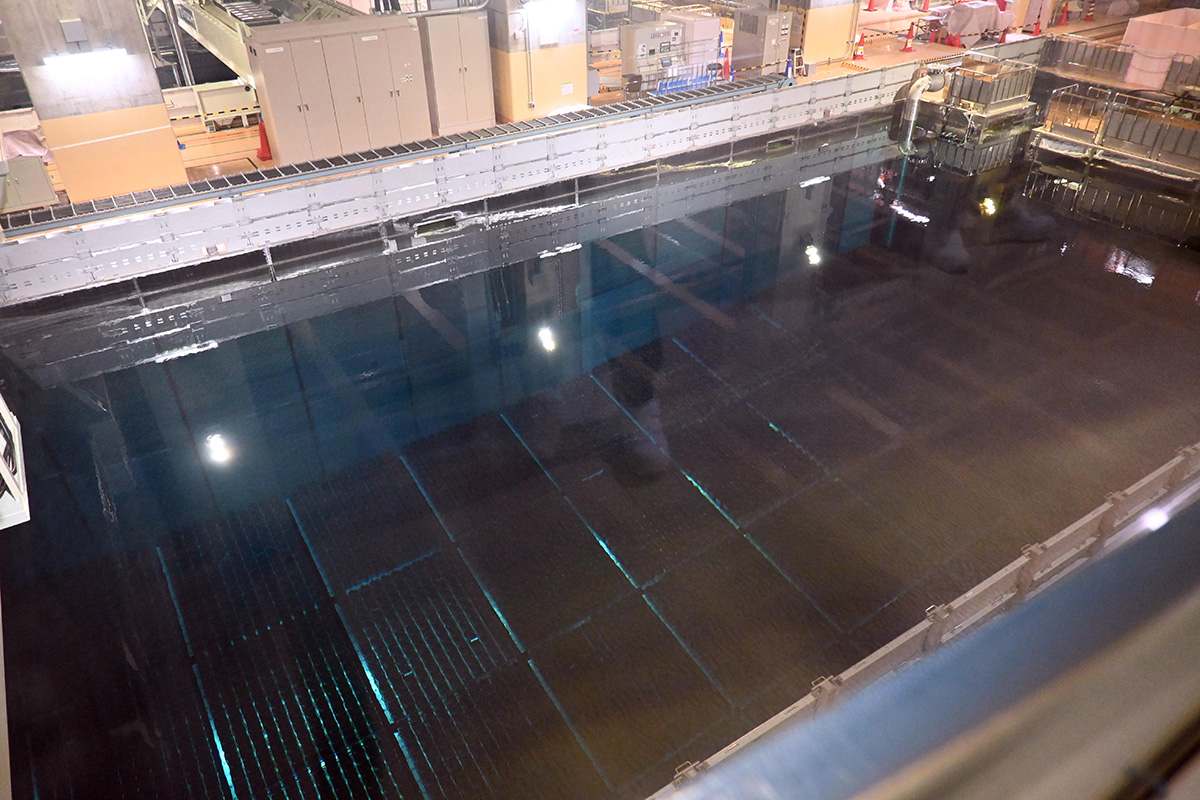
A storage pool for spent nuclear fuel from nuclear power plants in Japan; the pools are already close to capacity.
“Spent nuclear fuel from nuclear power plants around Japan is cooled to a certain extent before being transported here,” said the official who showed me around. While overlooking the processing plant’s three huge pools from the corridor, the official explained, “You wouldn’t be exposed to radiation if you were to walk next to the pools or even float on the surface of the water. However, if you were to sink into the water, it would be dangerous.” The quiet surfaces of the deep, clear-blue pools reflect the surrounding columns and lights. While it is difficult to imagine them storing spent nuclear fuel, the truth is that they are already close to their maximum storage capacity.
The construction of the reprocessing plant, where reusable plutonium and uranium is extracted through chemical processing, is 99% complete. “Active testing” is currently underway, and a monitor feed from the central control room shows operators working just as they would when operations actually begin.
Reprocessing comprises six major stages. The first stage involves placing spent fuel in a storage pool. After the fuel has been sufficiently cooled and the radioactivity significantly reduced, the metal tube containing the spent fuel is cut into pieces measuring several centimeters long. The metal fragments are initially separated by dissolving them in nitric acid, before the plutonium and uranium are separated to form powdered MOX and uranium oxide.
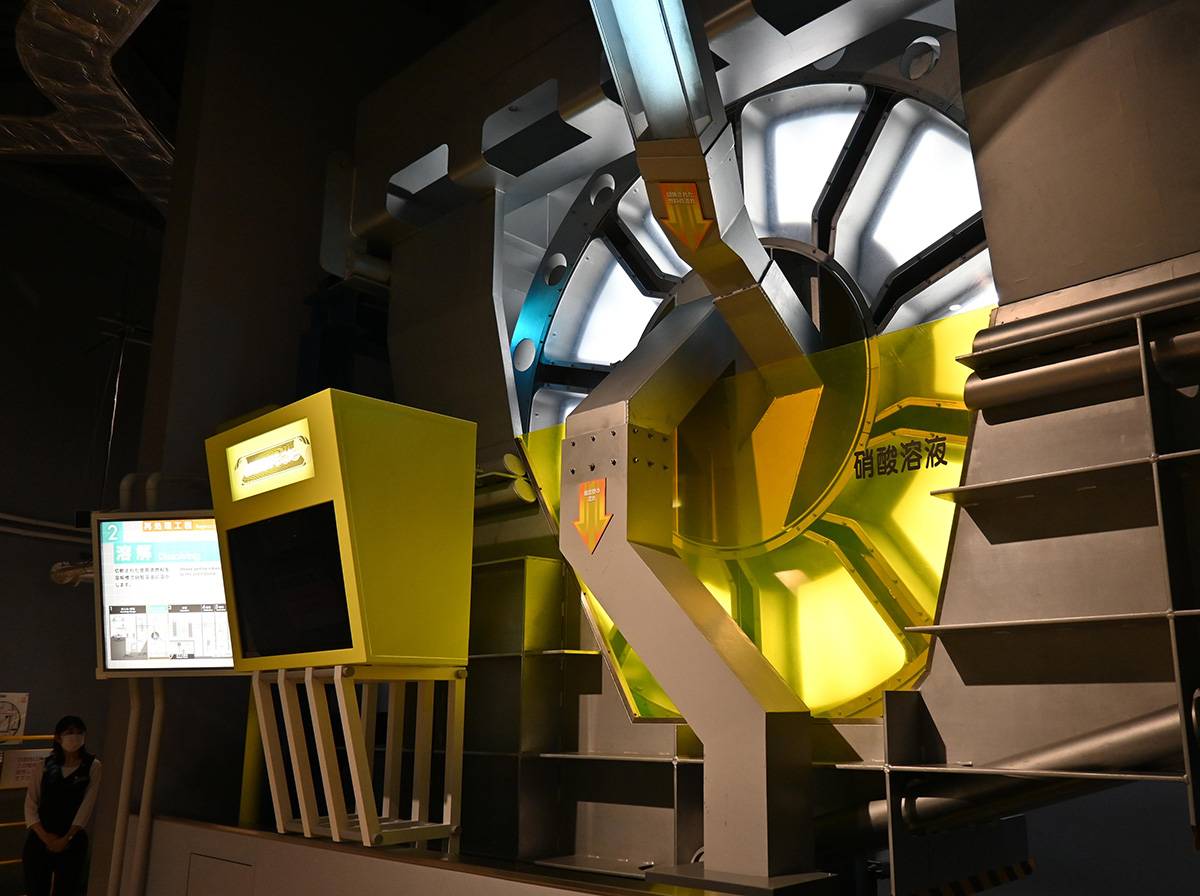
An exhibit explaining the steps involved in reprocessing.
The official said, “From the perspective of nuclear nonproliferation, plutonium powder cannot be stored in pure form, so we purposely dilute the MOX by 50% with uranium powder. Plutonium separation and uranium enrichment are technologies that could be leveraged to manufacture nuclear weapons. Under the nuclear agreement between Japan and the U.S, Japan can use plutonium for peaceful purposes, yet inspectors from the International Atomic Energy Agency (IAEA) are stationed inside the facility and monitor operations with cameras.
While normal nuclear power plants produce approximately 20 tons of spent nuclear fuel each year, the Rokkasho reprocessing plant has the capacity to process 800 tons annually, equivalent to that of about 40 nuclear power plants. Once the reprocessing plant begins operating and processing the spent fuel, the storage pools will once again have storage capacity. This will allow spent nuclear fuel generated by Japan’s nuclear power plants to be transported to the reprocessing facility.
MOX fuel plant
-
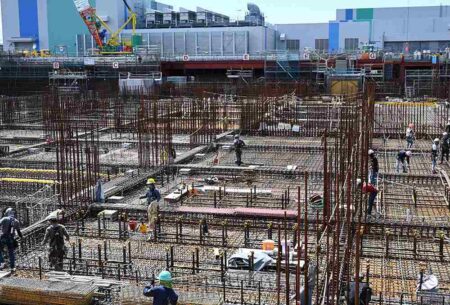
Construction work on the MOX fuel plant is expected to be completed in first half of fiscal 2024.
-
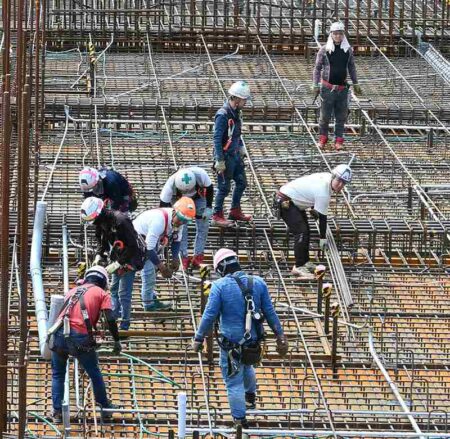
Workers are seen at the MOX fuel plant construction site.
-
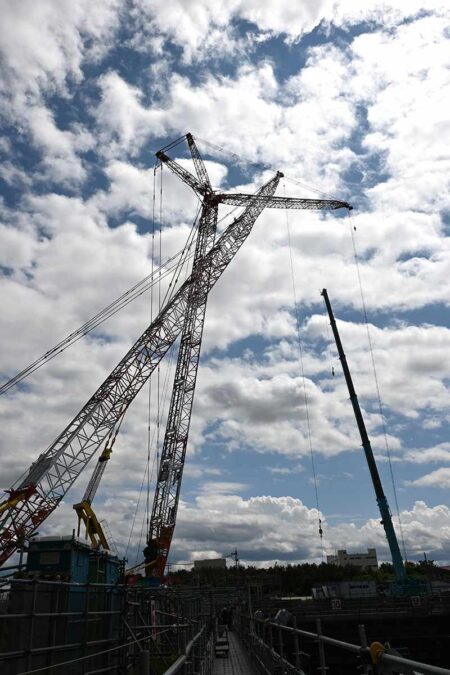
A large crane at the MOX fuel plant construction site.
Workers sweated under clear skies as huge crane arms transported materials overhead. The MOX fuel plant was the most active of the places I visited. The official in charge said, “We’re constructing a building with three underground floors and two above-ground floors. Currently, we’re creating the ceiling of the second basement floor.”
As the reprocessing plant and MOX fuel plant have yet to be completed, the power companies have been outsourcing spent nuclear fuel reprocessing and MOX fuel production tasks to foreign countries. Once the MOX fuel plant is completed, however, it will be possible to produce MOX fuel in pellet form in Japan. When the plant is fully operational, it will be able to process sufficient fuel for more than a dozen nuclear power plants in the nation each year. Four of the nuclear power plants that have been restarted are capable of pluthermal power generation using MOX fuel. The power companies are aiming to have at least 12 plants running by fiscal 2030.
Waste storage
-
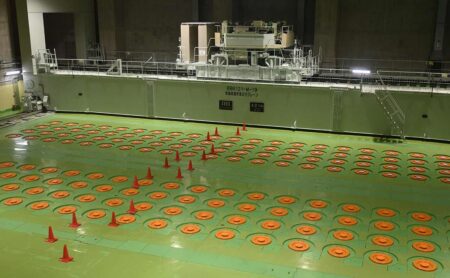
Interior of the vitrified waste storage center; vitrified waste is stored under the circular orange lid.
-
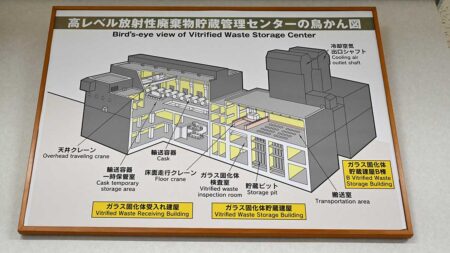
Explanation of the vitrified waste storage center.
-
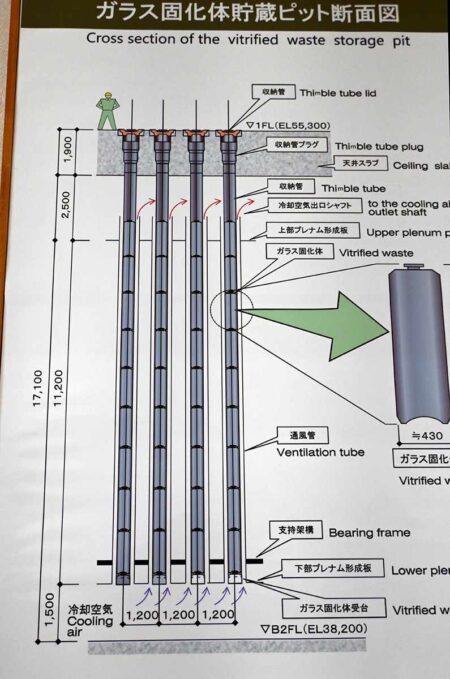
A cross-section of the vitrified waste storage pit.
-
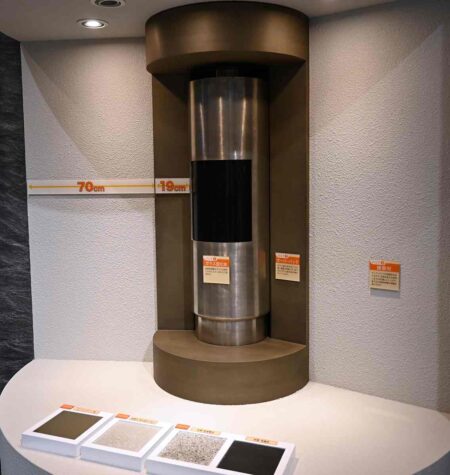
An exhibit showing the geological disposal of vitrified waste.
At the vitrified waste storage center, I saw circular orange lids neatly arranged on the green floor. Under the lids, vitrified high-level radioactive waste — fission products separated from spent nuclear fuel that cannot be reused — were stored in vertical rows.
The vitrified waste, which is solidified by melting high-level radioactive liquid waste and glass, is contained in stainless steel canisters. Because they emit heat, the canisters are constantly cooled by air from outside.
Of the 2,880-canister storage space, 1,830 spaces are already filled after the return to Japan of spent nuclear fuel processed in the U.K. and France.
However, deciding on a final disposal site for the waste is a problem. According to a “promise” drawn up with Aomori Prefecture, the vitrified waste will be removed from the prefecture sometime during a pre-agreed 50-year period. The first deadline occurs in 2045, and the final disposal site must be “operational” by then. Suttsu Town and Kamoeinai Village in Hokkaido have submitted documents for review as part of a selection process, but the road to a final decision is long and the future remains uncertain.
-
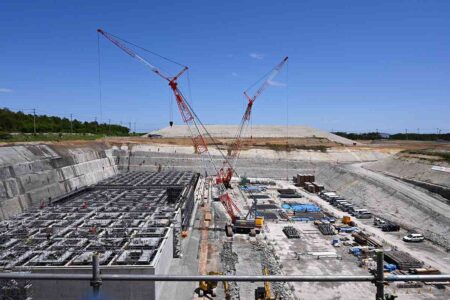
Construction is underway for the No. 3 Burial Center for low-level radioactive waste.
-
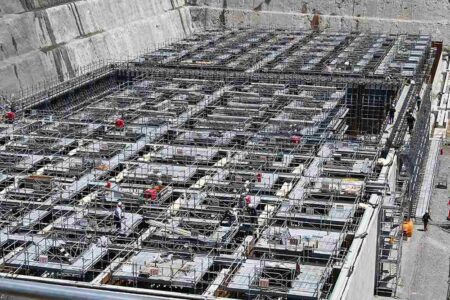
Workers are seen at the No. 3 Burial Center construction site.
-
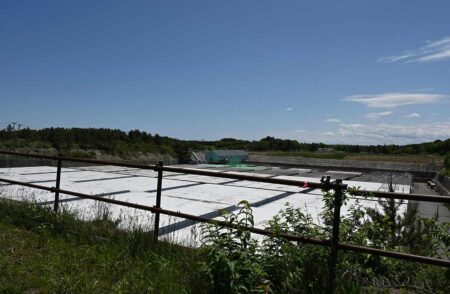
Burial Center No. 1, where low-level radioactive waste is stored.
-

An exhibit shows drums containing low-level radioactive waste.
Separate from the vitrified waste storage center, a third burial center is now under construction following the construction and operation of the No. 1 and No. 2 burial centers, which receive low-level radioactive waste from nuclear power plants across Japan. Japanese bush warblers sang in the surrounding area, and it seemed peaceful in contrast to the work going on in vitrified waste storage center. In the 30 years since it began operating, approximately 350,000 yellow 200-liter drums have been accepted — about 10% of its total capacity of 3 million drums. When full, they will be covered and monitored continuously.
Policy pillar
-
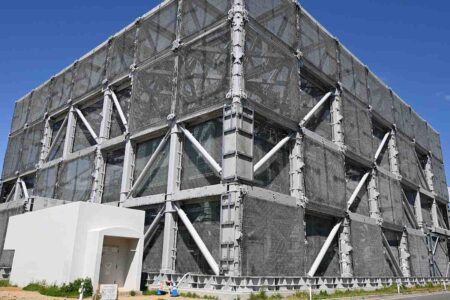
A cooling tower for high-level radioactive liquid waste is covered by protective steel netting to counter possible debris from tornadoes.
-

The Obuchinuma swamp is close to the nuclear fuel cycle facilities. In the event of an accident, it can serve as a source of water for cooling and firefighting.
-

The nuclear fuel cycle facilities are seen from the area near the swamp.
-
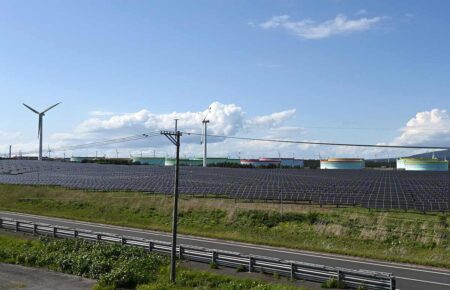
Energy-related facilities that deal with solar power, wind power and the national oil reserve are concentrated near the nuclear fuel cycle facilities.
The nuclear fuel cycle facilities sit about 55 meters above sea level, about 5 kilometers from the coast. Although there is no tsunami risk, the Nuclear Regulation Authority’s new regulatory standards stipulate measures against natural disasters or fires, such as installing steel protective nets to protect the cooling system from flying debris in anticipation of a tornado with a maximum wind speed of 100 meters per second.
According to JNFL, the reuse of spent nuclear fuel saves uranium resources and reduces the volume of high-level radioactive waste to one-fourth that of direct disposal. In addition, it reduces the time for the spent fuel’s radioactivity levels to decline to that of natural uranium from 100,000 years — if the fuel were to be buried as is — to 8,000 years.
-
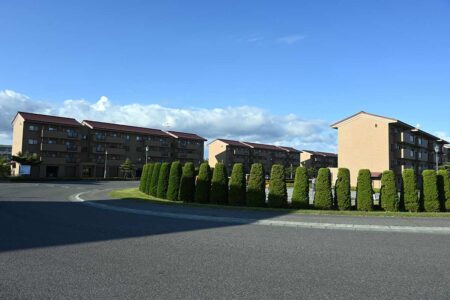
Obuchi Laketown, where many JNFL employees live.
-
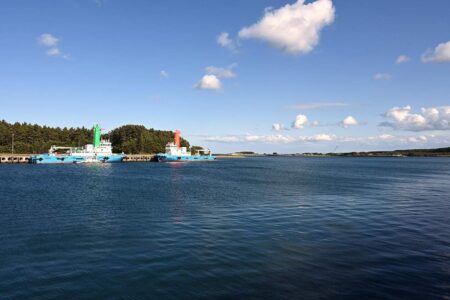
Mutsu Ogawara Port near the nuclear fuel cycle facilities.
-
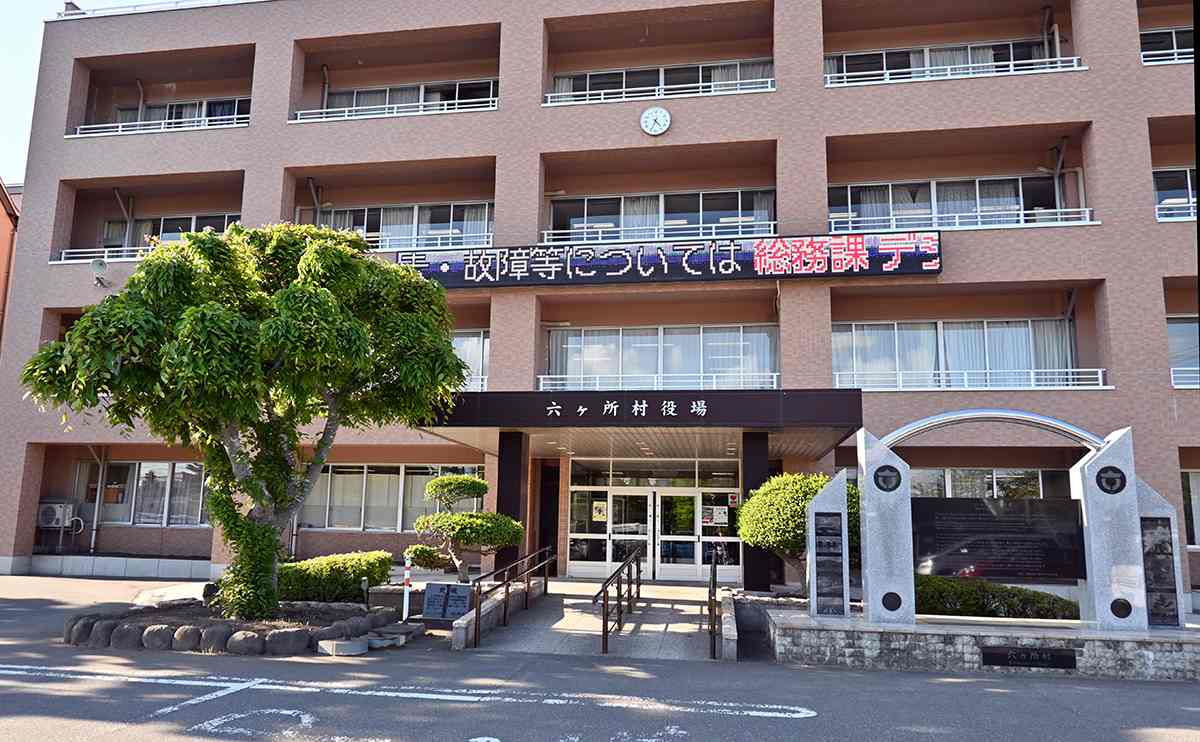
Rokkasho Village office.
Forty-three years have passed since the establishment of the former Japan Nuclear Fuel Service. “In the past, many residents opposed the project, but understanding has grown and we now coexist with the local community,” said Atsuya Hashimoto, 55, leader of the First News Group and a native of Rokkasho Village. “Currently, about 64% of our employees are from Aomori Prefecture.”
Stable energy supplies are in jeopardy worldwide due to the crisis in Ukraine. For Japan, with its limited energy resources, the nuclear fuel cycle — one of the two wheels of the nation’s nuclear power policy — should be prioritized as long as the nuclear power generation policy is promoted.
Japanese version
青森県六ヶ所村の巨大施設、核燃料サイクルの現場…貯蔵プールはすでに満杯
"JN Specialities" POPULAR ARTICLE
-

The Japan News / Weekly Edition (12/12-12/18)
-

English-language Kabuki, Kyogen Entertain Audiences in Tokyo; Portland State University Professor Emeritus, Graduates Perform
-

Noodle Dining Shunsai / Rich Oyster Ramen to Savor at Odasaga; Experienced 68-year-old Owner Creates Numerous Ramen Varieties
-

The Japan News / Weekly Edition (12/5-12/11)
-

People Keep Loved Ones’ Ashes Close in Special Jewelry, Small Urns as Unique Way to Memorialize Them
JN ACCESS RANKING
-

Keidanren Chairman Yoshinobu Tsutsui Visits Kashiwazaki-Kariwa Nuclear Power Plant; Inspects New Emergency Safety System
-

Imports of Rare Earths from China Facing Delays, May Be Caused by Deterioration of Japan-China Relations
-

University of Tokyo Professor Discusses Japanese Economic Security in Interview Ahead of Forum
-

Japan Pulls out of Vietnam Nuclear Project, Complicating Hanoi’s Power Plans
-

Govt Aims to Expand NISA Program Lineup, Abolish Age Restriction


























